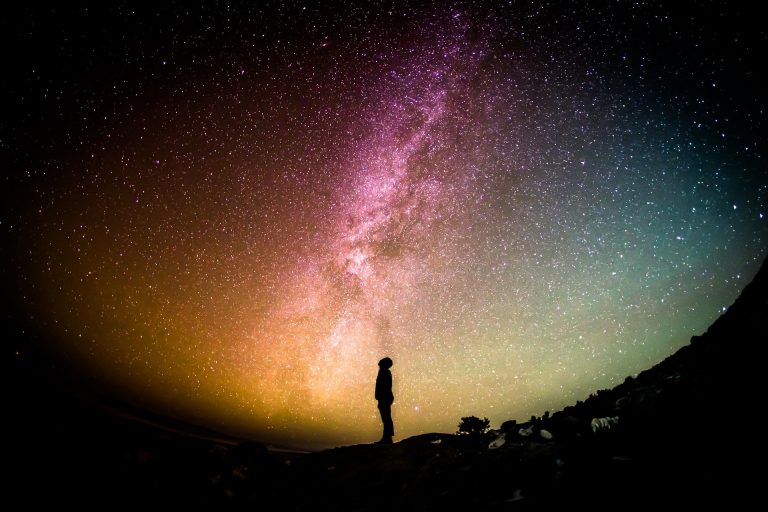
Topics covered
A sky full of stars. A romantic scenery that is increasingly difficult to enjoy because of the light pollution produced by man. For this reason today there are sky reserves. They are places without artificial lights, where everyone can really be under the stars.
What Are Sky Reserves?
However, the reason why such spaces exist is not just to allow people to enjoy a beautiful view. Actually, they also help protecting the environment. Light pollution in fact has a negative impact on the environment as well as on all nature, fauna and flora.
There are currently 12 celestial reserves in Europe, America, Africa and Oceania. They are certified by the International Dark Sky Association (IDA), a non-profit organization fighting for the protection of the night sky and the reduction of light pollution. Let’s find out what they are.
Aoraki Mackenzie, New Zealand
This reserve lies between Aoraki/Mt. Cook National Park and Mackenzie Basin on New Zealand’s South Island. It was proclaimed in 2012, but since the early 1980s the area had already been checked for outdoor lighting.
Brecon Beacons National Park, Wales, UK
This park is in a very special area of the United Kingdom. Here the sheep are about 30 times more than human beings. Few humans, little light pollution: the area became a sky reserve in 2013.
Central Idaho Dark Sky Reserves, Idaho, USA
It is the most recent one. Proclaimed a sky reserve in 2017, this area extends from Ketchum/Sun Valley to Stanley, including land in Blaine, Custer and Elmore counties and the Sawtooth area. With almost 1,400 square miles in the heart of the state of Idaho, it is the third largest reserve in the world.
Exmoor National Park, England, UK
Created in 2011, it is one of the three reserves in the United Kingdom, the nation with the highest number of sky reserves. It extends between the counties of Somerset and Devon. The focus on the area began in 2009, when many conservation programmes were activated during the UNESCO International Year of Astronomy.
Kerry, Ireland
Located on the Iveragh Peninsula in County Kerry, it is an area of about 270 square miles, with about 4000 residents. Proclaimed in 2014, this reserve is particularly sheltered from other sources of pollution. This is due to the fact that it is bordered by the Atlantic Ocean on one side and the mountains of Kerry on the other.
Mont-Mégantic, Quebec, Canada
It is in the area between the municipalities of Granit and Haut-Saint-François and the town of Sherbrooke. This is the oldest reserve in the world, since it has existed since 2007. The process that led to the nomination by the IDA has contributed to the light pollution controls of 34 cities in the area.
Moore’s Reserve, England, UK
Proclaimed in 2016, it is inside South Downs National Park. This is England’s newest national park, since it became fully operational in 2011. The park stretches about 87 miles around St Catherine’s Hill near Winchester in Hampshire, west to Beachy Head and east to East Sussex.
NamibRand Nature Reserve, Namibia
The only celestial reserve on the African continent is in Namibia, a country just above South Africa. Designated in 2012, it is also a “terrestrial” reserve. In fact, it helps preserving the incredible and unique ecosystem in the southwest of the Namib desert.
Pic du Midi, France
Created in 2013, this reserve is in a mountainous area of southern France, which attracts around 1.5 million tourists a year. It embraces a vast area that includes the Pyrénées-Mont Perdu, a UNESCO World Heritage Site, and the Pyrénées National Park.
Rhön, Germany
Proclaimed a sky reserve in 2014, it is in the middle of a larger area of the Rhön Biosphere Reserve. This nature reserve has existed since 1991 and covers over 660 square miles, including the Rhön Mountains. This place is particular because the three German states Hesse, Bavaria and Thuringia “meet” here.
Snowdonia National Park, Wales, UK
With more than 810 square miles, this park covers an area of about 10% of all Wales. The area is almost entirely mountainous and is among the places with the darkest skies in Southern UK.
Westhavelland, Germany
Westhavelland Nature Park is the largest protected area in the state of Brandenburg in Germany. In addition, it includes the largest number of marshy areas of any European country. Proclaimed a sky reserve in 2014, the area is just 43 miles west of Berlin, Germany’s most populous city.









